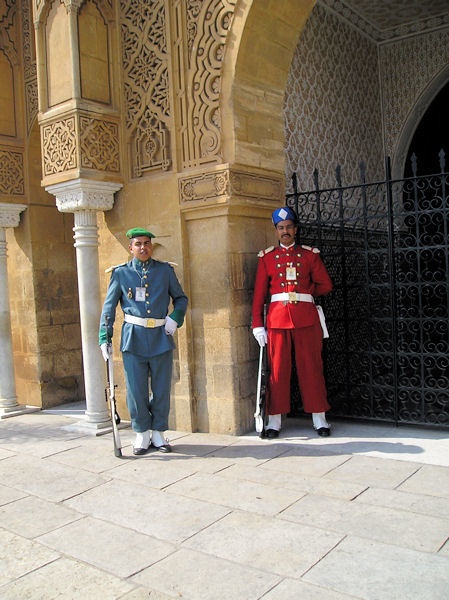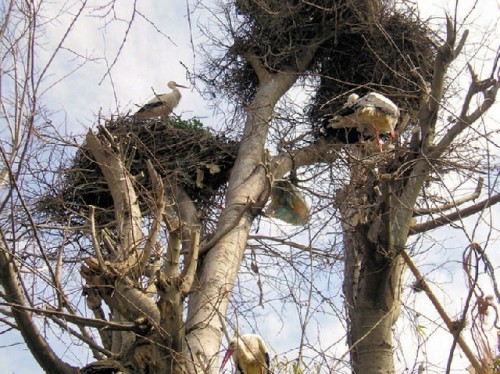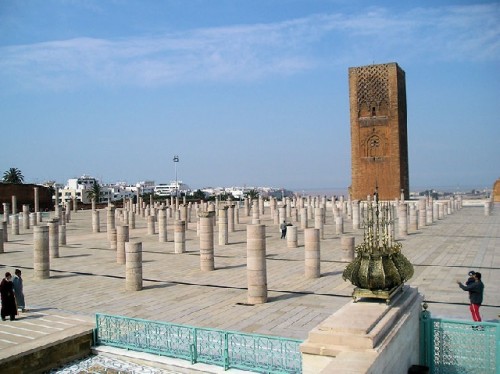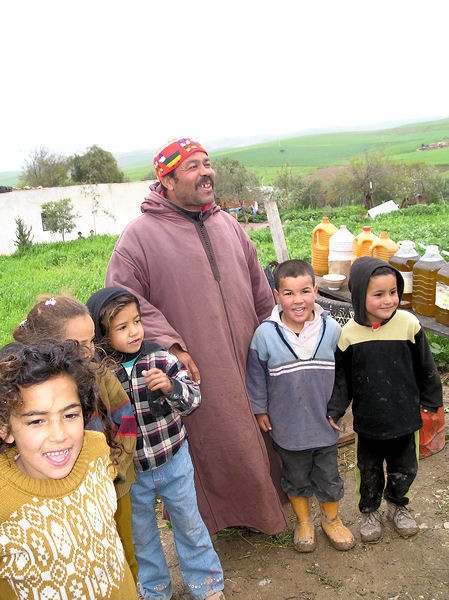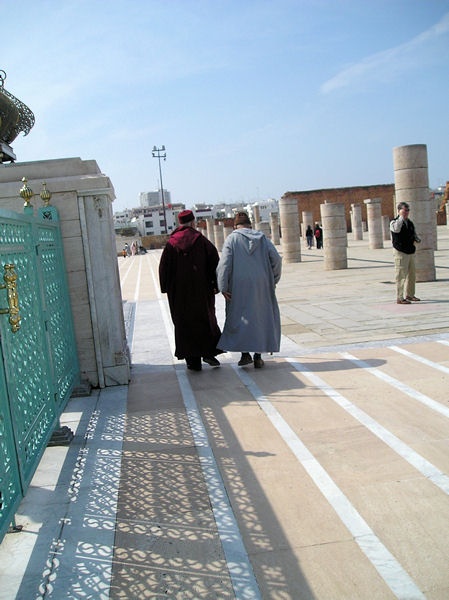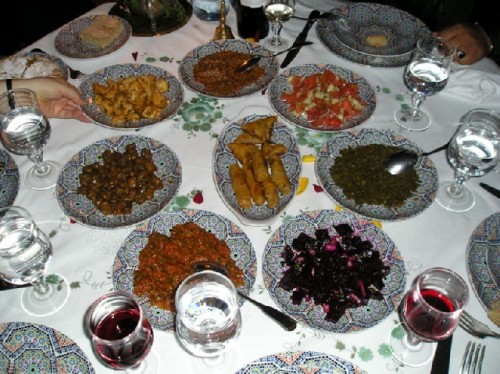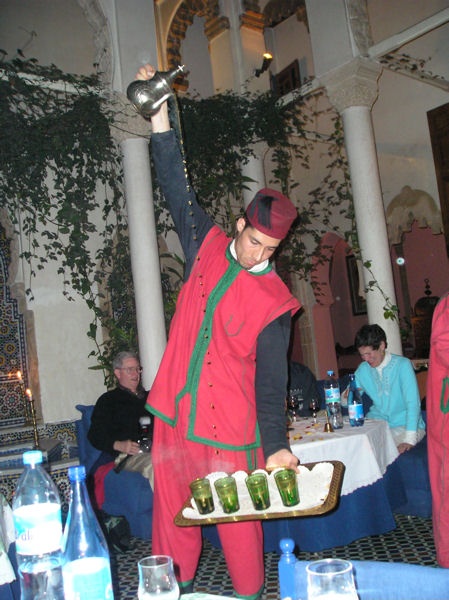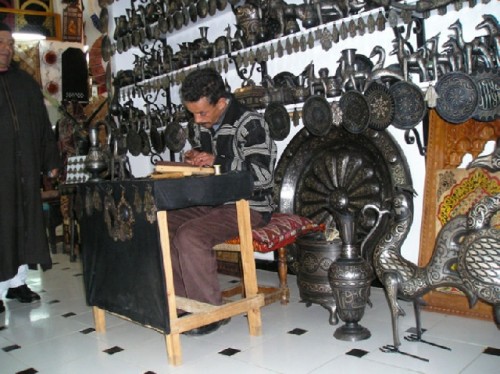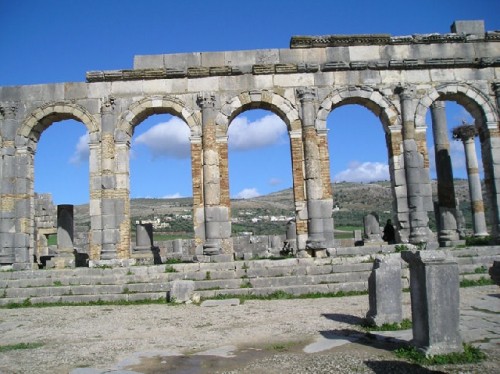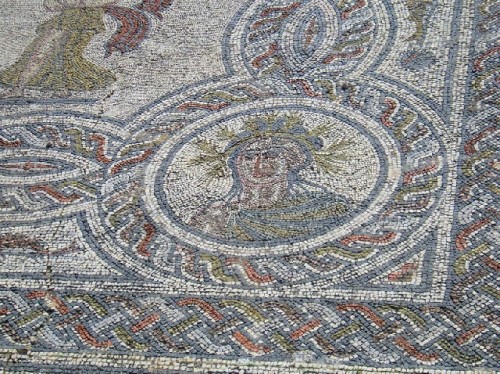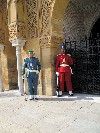Morocco: Part Two
Rabat and Meknes
By: Zeren Earls - Dec 20, 2007
Rabat
Our day began with an Arabic lesson with Aziz, who went over basic words phonetically, teaching us how to greet, thank, etc. A common greeting is "Salaam aleikum," "peace be upon you" accompanied by multiple kisses on each cheek as people meet one another on the street. "Shukran," indicating gratitude, we used profusely for the warm hospitality, extended to us everywhere.
Rabat, an imperial city founded by the Berbers, is the administrative capital of Morocco, a constitutional monarchy. The king rules over a nation of 32 million, 60% of whom are indigenous Berbers. 97% of the population is Muslim, following a tolerant Sunni tradition. They are represented by a parliament of 555 members elected from among 25 parties every six years. The Paris-educated, 43-year-old current King, Mohamed VI, married Princess Lalla Salma from Fez in 2002. The heir to the throne, Moulay Hassan, was born in, 2003.
The 18th-century Royal Palace is one of a dozen throughout the country where the King holds ceremonies of allegiance. Our experience was of its facade. Featuring seven keyhole gates, which represent heaven, the palace employs 2000 workers. Their ranks are indicated by the color of uniforms with gray for the most important armed guards, blue for police, and red for ceremonial workers, whose Turkish-imported costumes date back to the Ottoman Empire. The dark-skinned royal servants in white jalabas are Africans, whose jobs are inherited. The palace has its own necropolis, as well as a mosque for the King, who rides his horse to the Friday midday service.
Set in the wild gardens of Chellah are hauntingly beautiful ancient Roman ruins within the 14th-century walls from the 3rd Berber dynasty, the Merinids. Storks come to spend the winter here and nest on top of tall trees and ruins to tend to their offspring. Mesmerized by the tropical setting, I walked among loquat, orange and grapefruit trees, wandered through the Roman agora, and photographed Islamic tombs and white storks on crumbling walls. Shaded by a banana tree is a small fountain with coins in the center of a pool. Women come to bathe with eels living in depths so as to be granted fertility.
Hassan II Tower is a 12th-century Islamic masterpiece with four differently carved facades. It is all that remains of the world's biggest planned mosque, which was never finished because of the Sultan's death. The 312 Roman columns at its base once supported an immense roof, destroyed by an earthquake in 1755. Opposite is the marble mausoleum of King Hassan's father, Mohamed V, who led Morocco to independence. Designed by Vietnamese architect Vo Toan, its interior is a showpiece of craftsmanship.
Rabat is situated on the left side of the river Sale, opposite the town named after the salty river. Fishermen throw nets for sardines, which people buy off boats along the shore. Naturally, lunch was fish soup and grilled sardines. Afterwards we walked in the Andalusian gardens, within the walls of the Kasbah of the Oudaya. The repetitive palm motif of its main gate is to soothe the eye into contemplation. The Riyadh (garden) of the Kasbah is designed to bring harmony like the heavens. Bird and water sounds complement one another, as do the colors of exquisite flowers. People come here to meditate among the fragrant chaos of flowers and citrus trees.
Following a visit to the Museum of Archeology, where we viewed Neolithic skeletons, Roman bronze treasures, ceramics, coins and Islamic tombstones, we went to the supermarket to stock up for our camping adventure in the Sahara. I couldn't resist buying four typical Moroccan plates at $2 a piece. Upon returning to our hotel we had a lecture on the status of women by Emina, who worked for US AID's Democracy Project.
Before independence, women wore traditional dress and always had to be accompanied by men. From 1957 on traditions began changing. In 1999 the abolition of polygamy and divorce were put to parliament, but rejected. In October 2003 the new family law passed, raising the legal age of marriage to 18. Civil and religious marriages coexist; however, divorce cases must go through the courts, giving women rights in splitting assets. Honor killing and female circumcision are illegal.
The Welcome Dinner at Dinarjet, an upscale restaurant in the medina, was unrivaled. The beautifully tiled restaurant was formerly the private home of a wealthy man. At table we washed our hands over a brass bowl and dried them in heated towels. Our four-course meal started with pastilla (squab pie), followed by a variety of small dishes: eggplant, beets, spinach, fava beans, tomatoes with cucumbers and briwat (fried pastry). Tajines of lamb with raisins, beef and chicken with olives came as the main course. Dessert was jawhara: baked flaky pastry leaves layered with cream, flavored with rose water and topped with powdered sugar. Then we enjoyed mint tea and the ritual sprinkling of rose water on our hands. Arabic music on the oud, bendir and kanun accompanied our dinner.
Meknes
The drive to Fez, both scenic and educational, was through the countryside with stops. Morocco is the fourth largest exporter of cork, which is harvested by peeling the bark of a cork tree every seven years for ninety years. Afterwards the tree is used for firewood. Tiflet is a new Berber town with many constructions, mostly vacant homes of laborers, who have left to join the three million immigrants in France. The government discourages nomadic life in order to improve literacy, establishing new towns with a school and hospital. The literacy rate has dropped from 70% to 40% for men, 50% for women.
Agriculture constitutes 55% of Morocco's economy, so that two thirds of its land depends on rainfall. Due to global warming, drought is an increasing concern. There is underground water good for growing truffles, but even that has been receding because of drought. Truffles are harvested with the aid of digging dogs. Since this is a labor-intensive process, truffle sells for $15 a kilo. All agriculture is organic; phosphate is the only fertilizer used. Vineyards of white Muscat grapes growing close to the ground lined the road to Khemisset. Introduced by the French, the wine industry thrives in Morocco. Since it is a revenue source, Islamic alcohol prohibition is not enforced.
There is a fertile valley of olive groves en route to Meknes, an imperial city built in the 17th century that takes its name from a Berber tribe. Beating the trees with a stick brings down the olives. The different stages of "picking" determine their color( green ones in mid-November, brown ones in late November and black ones in mid-December). Farmers keep one-fifth of the crops they grow, which include barley and wheat. As we began climbing the foothills of the Atlas Mountains, roadside vendors appeared selling butter, honey, olive oil and free-range eggs, which we bought for our campsite. Sheepdogs also appeared, expecting to be fed; they are jobless because all wolves have been killed.
Sultan Moulay Ismail built massive walls around Meknes in addition to fifty-two palaces, stables and granaries, using white slave labor from Europe to serve his all-black army. These old buildings are now used as schools and hospitals. The Jews immigrated to Israel in the1960s or have moved to modern cities like Casablanca, leaving the historic quarter behind. The bustling market pays tribute to Morocco's two sacred foods: dates and olives. On display were close to thirty kinds of dates and heaps of olives of every imaginable arrangement, whole, cut up in circles and in chunks alternating with mounds of lemons. Seedless tangerines were the sweetest I have ever tasted.
Damasquines, metal worked with silver, are the primary craft of Meknes, the only city other than Toledo where the craft exists outside of the city of its origin, Damascus. We watched artisans apply silver designs to brass creating ornaments, vases, bowls, trays, etc. I bought a Fatima's hand, a wall ornament for the home to ward off the evil eye. Then over a two-hour lunch at a tourist restaurant we enjoyed grilled meats on a bed of pilaf laced with red peppers, preceded by warm and cold vegetable dishes accompanied by a basketful of round loaves of bread. The platter of fragrant bananas, oranges and strawberries that followed tasted like they had just been picked. Savoring a semolina biscuit with mint tea, we resumed our journey.
Traveling north we reached Volubilis, meaning "morning glory", which is the country's first Roman city. Leveled by an earthquake in 1755, it is a designated World Heritage Site. Amidst asphodels lie impressive mosaics and ruins of an aqueduct, agora, arc of triumph, and columns of houses, now serving as posts for nesting storks. To continue on to Fez we turned southward, driving through the holy city of Moulay Idriss. Named after its founder, who was a descendant of the Prophet Mohamed, this was Morocco's first Arab town. Its whitewashed vistas overlook rolling hills dotted with grazing goats. The road continues along green fields of various shades determined by rotation of the crops.

